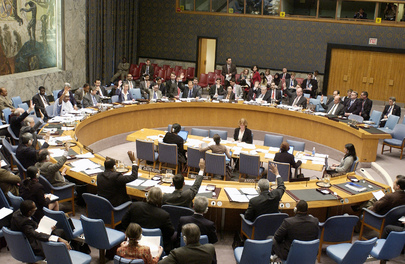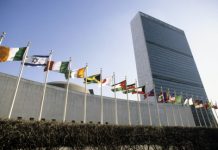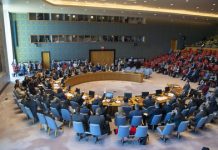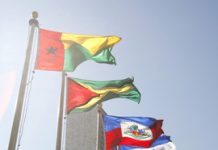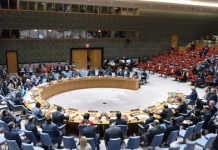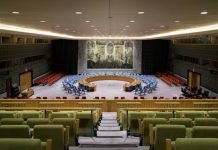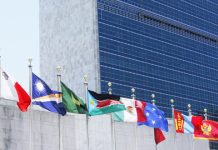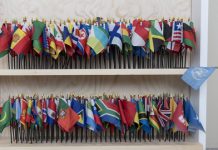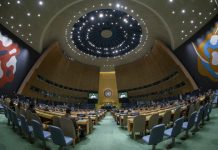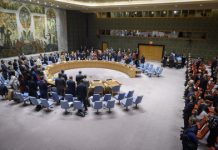The 2024 High-level Political Forum on Sustainable Development (HLPF) will follow on from last September’s SDG Summit, described by UN Secretary-General at the time as a “moment of unity” to turn the Sustainable Development Goals (SDGs) into reality.
Government Ministers, activists and members of civil society will meet and debate during a busy programme at UN Headquarters, much of which will be broadcast live on UN Web TV.
On the eve of HLPF, here are five important things to know about this significant event.
1. It’s about realizing the Global Goals
HLPF was born in the wake of the creation of the 2030 Agenda for Sustainable Development and the Sustainable Development Goals (SDGs) in 2015.
That Agenda, agreed and adopted by UN Member States, is often described as the blueprint for a better future, for people and the planet. It is broken down into 17 Goals, on critical areas such as poverty, education, gender equality and the environment.
The 2023 SDG Summit marked the mid-way point of the Goals, and underscored the fact that most of them are way off-track. At this year’s Forum delegates will attempt to inject fresh enthusiasm and accelerate action towards the Goals.
Grandmother Jeanette (66-years-old) and her grandchildren prepare manioc for dinner.
2. Spotlight on five Goals
The Goals under review this year are SDG 1 (Ending Poverty), SDG 2 (Zero Hunger), SDG 13 (Climate Action) SDG 16 (Peace, Justice and Strong Institution) and SDG 17 (Partnerships for the Goals).
Discussions will revolve around some of the main takeaways from this year’s SDG progress report, a comprehensive stocktake which, according to UN Secretary-General António Guterres, showed that “the world is getting a failing grade”.
These takeaways include the fact that, in 2022, 700 million people lived on less than $2.15 per day and up to 783 million faced hunger; the last nine years have been the warmest on record; and that access to justice continues to be out of reach for large portions of national populations.
Each Goal is broken down into targets, some of which are being met, (for example, child mortality has seen a fall), but they equate to less than a fifth of the total. Around a third have stalled or are even going backwards.
Young girls study at a school in Mazar-i-Sharīf, Balkh Province, Afghanistan.
3. Countries will share their success stories
But the UN is keen to show that all hope is not lost, pointing to recent strides in deploying renewable energy, girls in most regions achieving parity and even pulling ahead of boys at school, and progress in the combat against HIV/AIDS.
Several countries will share their examples of best practice, and lessons learned, reporting back the outcome of their Voluntary National Reviews. You can find the full list of the countries presenting their reviews here.
“Time and again, humanity has demonstrated that, when we work together and apply our collective mind, we can forge solutions to seemingly intractable problems,” said Li Junhua, UN Under-Secretary-General for Economic and Social Affairs.
A delegate to the Permanent Forum on Indigenous Issues on the floor of the general Assembly hall.
4. It’s not just Member States: other voices will be heard
The 2030 Agenda for Sustainable Development impacts all sectors of society, not just governments, and this is reflected at the Forum. There will be several special events and side-events taking place over the two weeks, involving groups representing a range of special interests, including women, children and youth, NGOs, indigenous peoples, farmers and local authorities.
The first week will see events devoted to science-based action on the SDGs, mobilizing local and regional governments and transforming education. During the second week, there will be a focus on food security and nutrition, water action, and climate.
You can find the full programme here.
Young people line up along side a display at UN headquarters in New York representing the 17 Sustainable Development Goals .
5. Next stop: Summit of The Future
The forum will help build momentum for the Summit of the Future that will take place on 22 to 23 September. The centrepiece of the High-Level Week of the General Assembly, the Summit is billed as an opportunity to revitalize the multilateral system and get the world back on track to achieving the SDGs.
Progress on financing will figure heavily at both events, and the discussions that take place at the July forum will feed into the declarations and documents that will be unveiled at the Summit of the Future.
These include the Pact for the Future, aimed at defining the priorities and actions for addressing global challenges; the Declaration on Future Generations, which will contain specific steps to account for the interest of coming generations; and the Global Digital Compact, expected to outline a path towards an open, free, secure and human-centred digital future for all.
Source of original article: United Nations (news.un.org). Photo credit: UN. The content of this article does not necessarily reflect the views or opinion of Global Diaspora News (www.globaldiasporanews.com).
To submit your press release: (https://www.globaldiasporanews.com/pr).
To advertise on Global Diaspora News: (www.globaldiasporanews.com/ads).
Sign up to Global Diaspora News newsletter (https://www.globaldiasporanews.com/newsletter/) to start receiving updates and opportunities directly in your email inbox for free.


